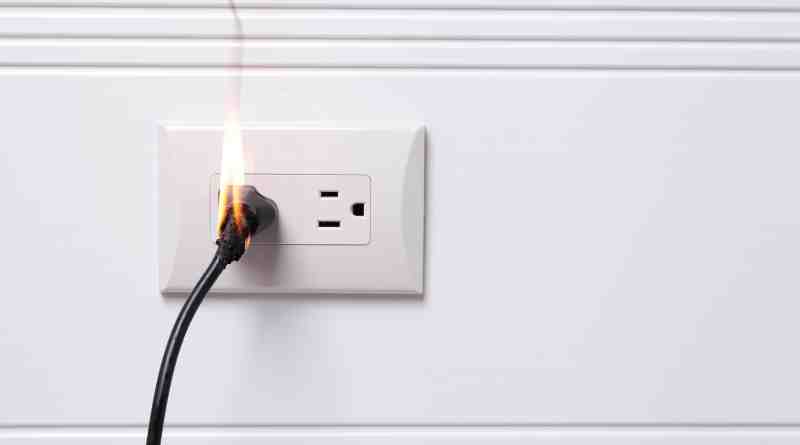RESIDENTIAL ELECTRICAL FIRES: SOME SOBERING STATISTICS
As a long-time electrical contractor in San Antonio, TX we have seen our fair share of the dramatic consequences of residential electrical fires. We can’t but be appalled however at how little homeowners know about the reality of the risks, and how easily a non-compliance with the National Electrical Code could turn the dreams of a family into ashes.A report published by the National Fire Protection Association (NFPA) underscores how the risk of fire requires more attention on the part of stakeholders, particularly families, in the context of electrical fire risks.
The report reveals that electrical failures or malfunctions were implicated in approximately 13% of home structure fires between 2015 and 2019. This is a shocking statistic that not only highlights the prevalence of such incidents, but also emphasizes the necessity for families to engage in proactive safety practices, and for regular inspections to be conducted by licensed electricians.
- Understanding Home Fire Safety
A meticulous examination of statistical data offers a clearer understanding of the risks involved in home fires, and the necessary precautions that all stakeholders should take in order to curb the numbers. The U.S. Fire Administration (USFA) provides useful insights into this area.
According to statistics published by this agency, there has been a 5% decrease in residential building fires over a 10-year period from 2012 to 2021. However, this period also saw an 8% increase in deaths and an 11% increase in dollar loss due to these fires. These figures highlight a concerning trend: while the number of fires may be decreasing, their severity and impact are escalating.
The risk posed by cooking is a critical component of home fire safety.
- Cooking Fires
- Prevalence and Impact
Cooking fires represent a significant portion of home fire incidents. In a recent report, the U.S. Fire Administration (USFA) indicated that in the U.S., firefighters intervene in about 170,000 residential cooking fires. These fires resulted in some 135 persons dying, 3,000 persons injured, and almost half a billion dollars in property damages.
Unattended cooking was the first contributing factor to these fires (37%). This data highlights the critical need for vigilance and safety practices in the kitchen.
- Decreasing Trends Yet Persistent Risks
Despite a 4% decrease in cooking fires over a 10-year period from 2012 to 2021, the risks remain substantial. The same period saw a 31% decrease in deaths and a 32% decrease in injuries due to cooking fires. However, the persistent occurrence of these incidents underscores the importance of continuous safety education and preventive measures.
There again, education within the family unit must play a role in lowering the numbers. Agencies such as the NFPA definitely play a role in this as they publish “tip sheets” specifically designed to make children aware of the risks. The school system is also called to play a role in instructing children based on this type of materials.
- Role of Licensed Electricians
Licensed electricians play a role in reducing the risk of cooking fires. When a home is changing hands, the buyer should always have a licensed electrician carry out an electrical safety inspection. From the deficiency report, a licensed electrician should repair all structural defects in the electrical circuits, install Ground Fault Circuit Interrupters (GFCIs) in kitchens and bathrooms, and make sure all smoke detectors are operational in sleep rooms and on every level of the home. Additionally, electricians can advise on the safe placement of appliances to prevent overheating, and recommend appropriate fire extinguishers for kitchen use. If they can’t force people to pay attention to their cooking, they can at least remedy the structural risks.
- Home Structure Fires: Analysis and Prevention
- Scope and Severity
Home structure fires account for a significant portion of fire-related incidents, with dramatic implications for safety and property.
According to the U.S. Fire Administration, there were approximately 353,500 residential building fires in 2021, resulting in 2,840 deaths, 11,400 injuries, and property losses amounting to $8.86 billion. This data reflects a 5% decrease in fires over a decade, yet an alarming 8% increase in fatalities, underscoring the escalating severity of such incidents.
- Electrical Malfunctions as a Key Contributing Factor
Electrical failures or malfunctions are prominent causes of home structure fires as shown by the statistics published by the USFA: 24,000 instances of building fires, 295 fatalities, 900 injury cases, with property damages evaluated around $1.2 billion.
This fact highlights the critical role of electrical safety inspections in preventing such incidents. Regular inspections by licensed electricians can identify and rectify potential hazards, significantly reducing the risk of fires caused by electrical malfunctions.
- Impact of Electrical Safety Inspections
Electrical safety inspections assess the condition of a residential electrical system and will uncover hidden dangers such as outdated wiring, overloaded circuits, faulty electrical panels, all common contributors to home structure fires.
- Smoke Alarms: A Lifesaving Tool
- Their Role
A report by the National Fire Protection Association (NFPA) highlights that smoke alarms were present in 74% of reported home fires from 2014 to 2018. However, a significant number of home fire deaths occurred in properties without smoke alarms (41%) or with non-operating smoke alarms (16%). This data underscores how smoke alarms reduce fatalities in home fires.
- Effectiveness and Reliability
Their effectiveness is evidenced by operational statistics. In fires considered large enough to activate a smoke alarm, hardwired smoke alarms operated 94% of the time; battery-powered alarms functioned 82% of the time.
Primary factor behind smoke alarm failure? Power source issues. This fact highlights the importance of regular maintenance to ensure these devices are operating reliably.
- Installation and Compliance
Getting smoke alarms installed by licensed electricians will significantly enhance their effectiveness and their compliance with safety standards. According to the National Electrical Code (NEC), smoke alarms should be installed in each bedroom, outside each sleeping area, and on every level of the home, including basements.
In new constructions, per NEC requirements, smoke alarms must are hardwired with a battery backup. This extra layer of prevention serves to decrease the first factor behind smoke alarm malfunctions.
- Electrical Fires: A Persistent Threat
- Prevalence and Impact
Electrical fires in residential buildings remain a persistent and significant threat. According to the U.S. Fire Administration, 2021 witnessed 24,200 fires attributed to electrical malfunctions, resulting in 295 deaths, 900 injuries, and a staggering $1.2 billion in property damage.
These figures represent an 11% increase in fires over a decade, alongside a 27% increase in dollar loss, adjusted for inflation. This trend is alarming.
- Trends and Patterns
The data over a ten-year period (2012 to 2021) reveals contradictory trends. While there has been a 17% decrease in deaths, injuries have increased by 8%. This pattern indicates that while fatalities may be decreasing, the overall risk and impact of electrical fires are escalating, particularly in terms of injuries and financial losses.
- Role of Electrical Safety Inspections
There is little doubt that electrical safety inspections must become a tool used by homeowner on a regular basis to lower the risk of death, injury, and property damage. Conducted by licensed electricians, these inspections are identify and mitigate risks by detecting issues such as outdated wiring, overloaded circuits, and faulty electrical components.
By enabling homeowners to address these hazards, electrical safety inspections serve as a preventative measure against the occurrence of such devastating events.
As noted above however, they are not the only measure in the preventative arsenal: publication education campaigns and children fire safety education within the family remain central in the fight against electrical fires.
About the author: All Star Electric is a licensed electrical contractor in San Antonio. Operating in the city for close to 30 years, the company conducts electrical safety inspections and subsequent electrical repairs and upgrades on a routine basis.
Read also; check


